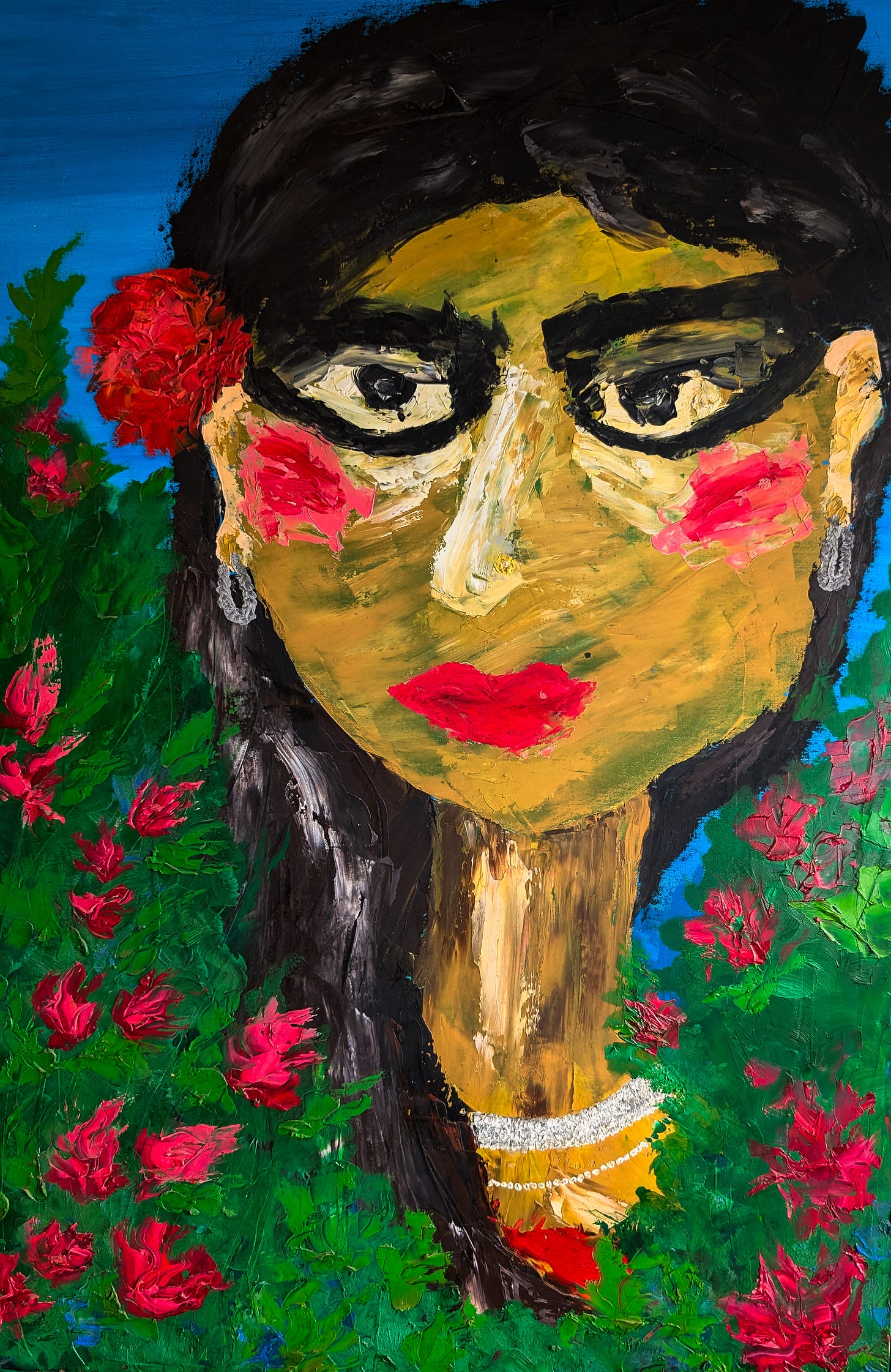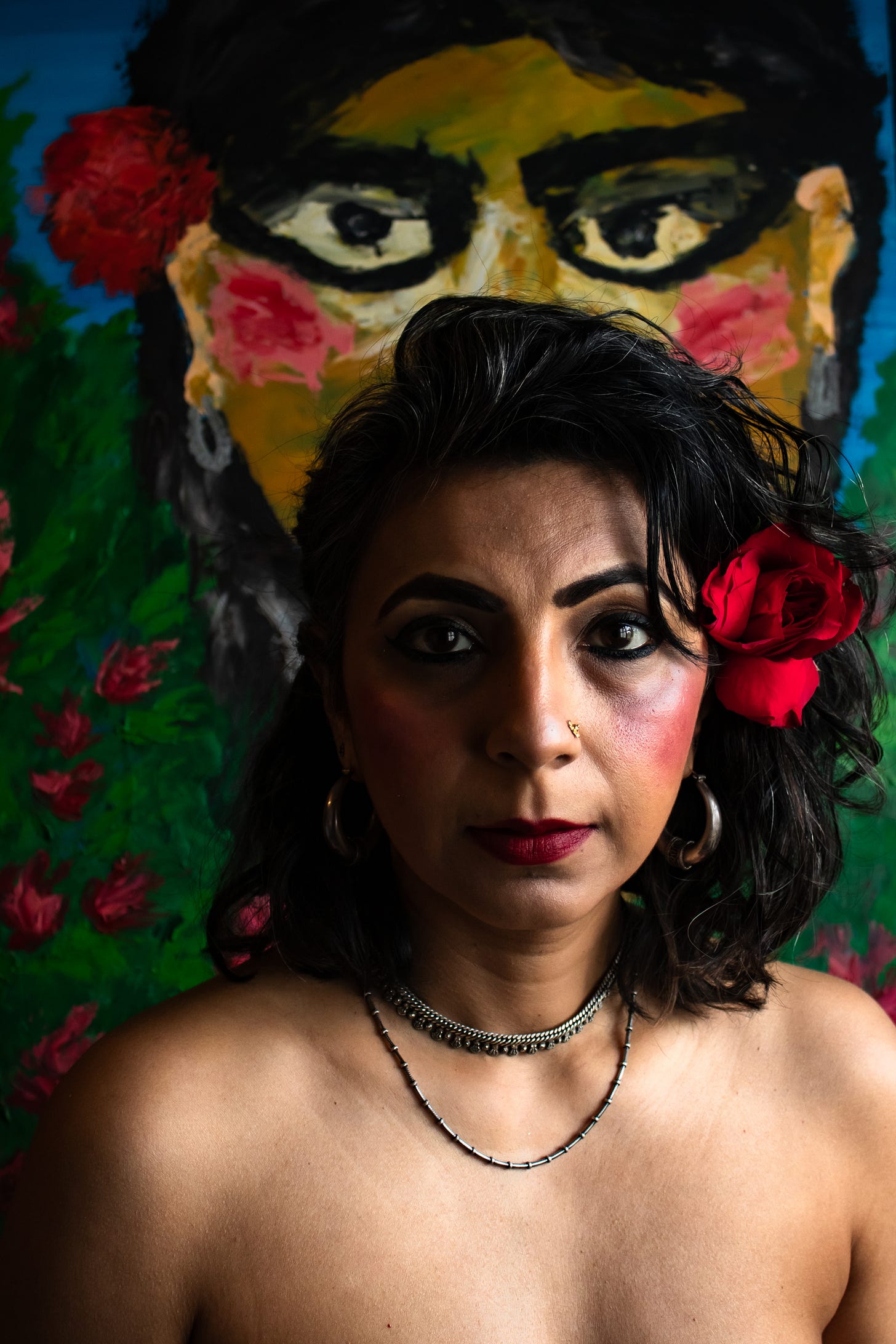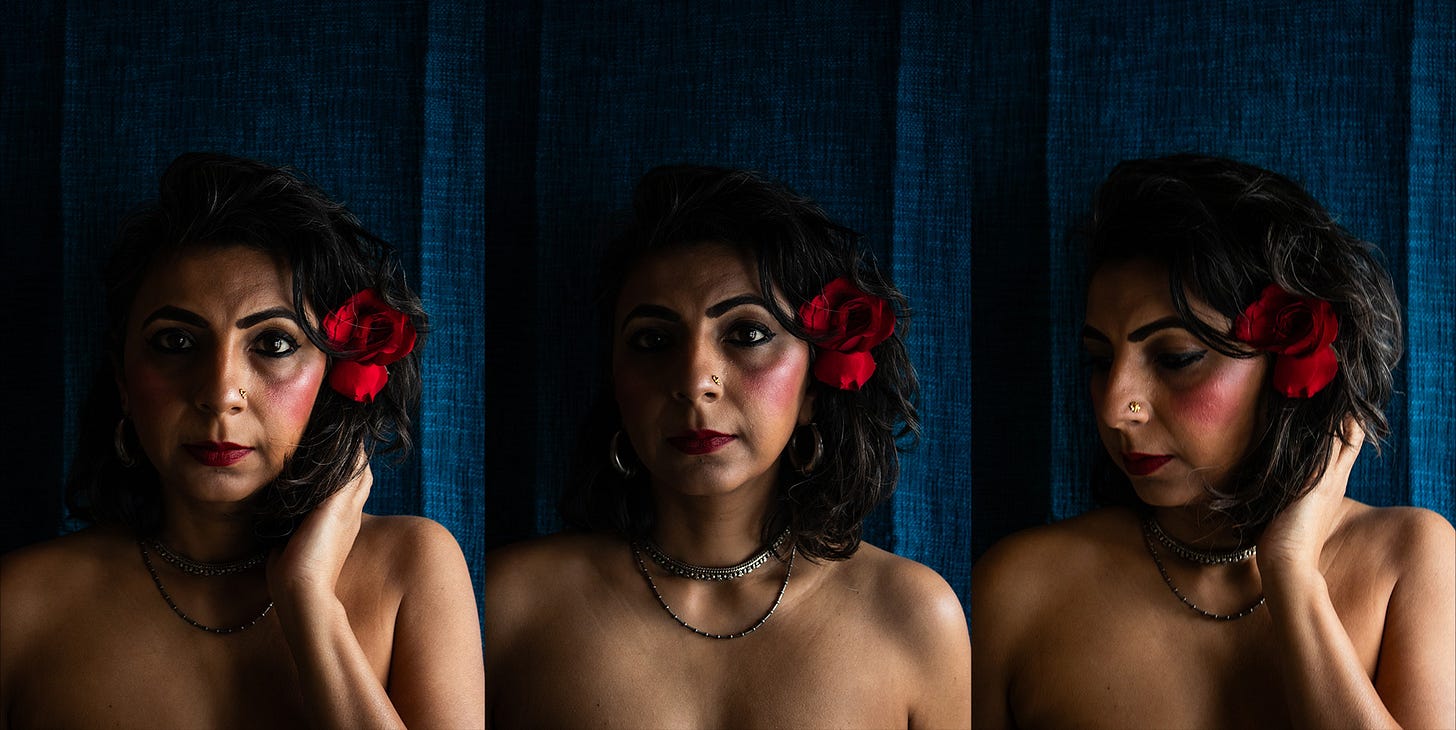Self-portraits are a widely explored form among artists. They are used as an exercise to delve deeper into who we are—not just as people but as creative beings. Where does our purpose lie? Where do we begin from? And most importantly, how do we see ourselves?
Through Naqab, I am exploring various facets of who I am. Some are pretense versions created for very specific occasions and purposes. Others have been conditioned by life and experiences. Only a few belong to me, free from my lived experiences. These facets form my core and are closest to my most authentic self and, thus, my most authentic voice.
When I was young, my art teacher did not let me explore oil on canvas. I was restricted to colour pencils, oil pastels, poster paints, and, on occasion, watercolours. I begged and pleaded, but he remained firm. “You are too young for this,” he would comment and then move on to give me instructions on how to improve my drawing.
Over time, I forgot that I promised myself to learn oil on canvas, no matter how long it took. A few years ago, I was painting with my daughter when she asked me if I could get her a canvas.
“You want to learn oil painting?” I asked her.
“What’s that?”
“The most beautiful paints in the world! You need to mix it with a little oil… linseed oil, it takes time to dry, but the colours shine. But you can also use turpentine, that dries faster, but the colours remain a bit dull. And you don’t even need a paintbrush. You can also paint with palette knives.” As I rattled on I realised that my daughter was staring at me.
“What?” I asked.
“Have you painted with oil colours before, mama?”
“No. I never got to try them,” I said, sounding somewhat bitter. Memories of childhood sat uncomfortably in my gut.
“Then how do you know so much?”
“Because I always wanted to paint with oils but was not allowed to. So instead, I looked at art books and read about it.”
“Why don’t you do it now? You don’t need anyone’s permission. You are now a big adult.”
I paused, wondering why I had never given oils a shot.
“Want to try it out together?” I asked my daughter, pulling out my phone.
Over the next half hour, we browsed, selected and bought oil paints, palette knives, a brush set, turpentine, linseed oil, four small square canvases, one large one and an easel. Amazon promised that everything would be delivered by Saturday.
Sunday afternoon, my daughter and I sat in our kitchen, newspaper spread neatly on the table, ready to paint. The large blank canvas stared at me expectantly. I stared back, unsure of how to begin.
“What are you going to draw, mama?” my daughter asked, dipping her brush in a pot of bright red acrylic paint.
“I don’t know.” This was a mistake.
“Draw yourself,” she said, without looking up from her painting.
Draw myself? That sounded daunting.
It could be any woman, I told myself. She didn’t need to look like me. It could be a first attempt, and I could get better from there.
I was not taught art as a means of creative expression. Instead, I was taught to draw neatly within set rules. This conditioning was so deep that I didn’t realise I had lost the confidence or ability to explore drawing and painting without judgement. I spent two years in art school avoiding drawing and choosing every other medium instead. Maybe today, I could paint without rules and see what emerged. Maybe today, I could challenge every teacher who had told me, “This is not the correct way.”
I took a deep breath and began.
A rough outline of my face appeared. Then, slowly, I began colouring in the features. After an hour, I abandoned the paint brushes, choosing to use the set of palette knives instead. The strokes grew bolder as my mind wandered to my young adult years. The flower petals popped brighter as I thought of my career and creative journey as a professional. The green and blue merged into a vibrant background as my focus shifted to my home.
As I added layers, each stroke became gentle—a caress across the jaw, bright pink on the cheeks, and full, scarlet lips. My hair fell in gentle waves across my shoulder, uncombed and unruly. My nose grew prominent, eyebrows dense, and eyes outlined in deep, black kohl. A bright red rose framed my face.
Was I painting myself or a version of myself? The woman on the canvas was different from me. Yet when we looked at each other, I felt a kinship. Is this how I looked at myself? Or was she a version I longed to grow into?
This is not who I am right now, I decided.
But this is who I will become.
This is where it all began.
Naqab (Mask) explores the many masks I wear as an Indian woman. It is my attempt to unravel, and discover my deep-seated conditioning, biases, strengths and weaknesses, one portrait at a time.
The project will span a year, with one portrait every week.
Head here for the entire series.
If you liked this project, please consider sharing or recommending my publication. It would immensely help a new writer like me reach a wider audience.
I would love to hear from you! Drop in a comment and let me know your thoughts.





I absolutely love the painting and the painter! Bravo!
Wonderful.
Thanks for sharing
I'm going though a mental inertia, which do not allow me to go , do anything